Enthroned At The Summit Of Larzac: Domaine de Montcalmès, A Languedoc Stand-out, Drinks Well In Its Youth And Shows No Weakness With Age + Recent Arrival Two Rising Stars From Larzac — Five-Bottle Package For $215
If you’re an aspiring domaine owner working with a tight budget, and have an eye to producing world-class French wine, you could do worse than Terrasses du Larzac, where an acre of vineyard land might set you back the equivalent of $5,000. Compare that to Burgundy’s $100,000-an-acre mind-blowing average. Not only that, but only 35% of the available land is currently under vine.
It’s no wonder that this relatively new (2014) appellation is seducing many winemakers who are equally green behind the ears; they are beginning careers with an eye (and palate) toward quality—still a rather novel concept in Languedoc, long the home for a sea of cheap wine available for under ten dollars a bottle. AOP rules in TdL are relatively tight in comparison to the Languedoc as a VdF: in Larzac, there are five permitted grapes—Grenache, Syrah, Mourvèdre, Cinsault and Carignan; the wines must be blends and include at least two from Grenache, Syrah and Mourvèdre. Furthermore, cellar-ageing must last at least one year.
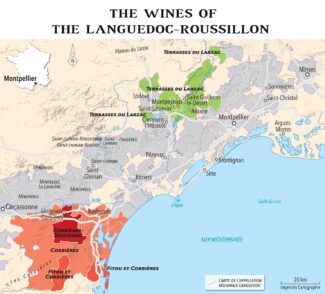
Among the new class of Larzac producers, we number the following as among our favorites. They are visionaries with both heritage and discipline, finding in the wonderfully diverse terroirs of the region an opportunity to rival, and frequently outgun, wines from the same grapes made way up north in the Rhône.
Terrasses du Larzac: A Languedoc Stand-Out, Coming Into Its Own
The history of Languedoc’s vineyards dates back to the 5th century BCE when the Greeks introduced vines to the area. As such, the Terrasses du Larzac AOP is a bit anomalous simply because it only received official recognition in 2014. Extending across 32 communes among the foothills of Larzac, with its northern boundary naturally formed by the Causse du Larzac, part of TdL’s appellation upgrade was a phasing-out of the predominantly Carignan-based wines of the past in favor of ‘cépages améliorateurs’ (improver varieties) like Grenache, Syrah and Mourvèdre—grapes more usually associated with Rhône. Carignan is now limited to only 30% of any Terraces du Larzac wine.
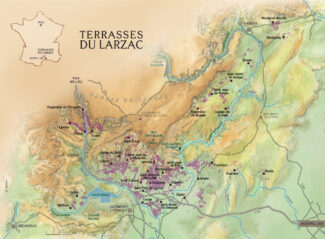
But the terroir is perfectly suited to the Big Three; Larzac is geologically varied and offers soils that range from stony clay and sand, iron-rich red soils, and heavier clay soils with high limestone content. Vineyards situated on the banks of the Hérault river are planted on pebble-strewn alluvial terraces and stonier soils with limestone bedrock. The average altitude of the local vineyards is around 400 feet, but rise to nearly 1300 feet in the northerly commune of Saint Privat. The Mediterranean climate provides distinctly seasonal rainfall throughout spring and fall, and thanks to the nearby mountains of the southern Massif Central, the appellation’s vineyards enjoy the benefits of cooler nights after hot days, helping to provide balance between sugar and acid in the grapes.
The Package …
This week’s package offering is comprised of five wines featured and numbered below: Two wines from Montcalmès, one red and one white, and one of each of Saint-Sylvester and Le Clos du Serres two wines for a total of five bottles at $215.
Domaine de Montcalmès
The Summit of Larzac
The quiet persistence of Frédéric Pourtalié has, since his first vintage in 1999, gradually elevated Domaine de Montcalmès to a quality level to match his mentor Grange de Pères, although in terms of cult wine status, it still flies a bit under the radar. Pourtalié trained at Pères before taking over family vineyards at the edge of the Massif Central, where cool night air descends off the Cévennes Mountains.
Named for a hamlet that once overlooked the Hérault valley, Pourtalié’s winemaking cousin Vincent Guizard (now of Domaine Saint-Sylvestre) joined in 2003 in a quest to put the Hérault estate on the world’s wine map. Today, Pourtalié farms 54 acres spread between the communes of Puéchabon, Aniane, St. Jean de Fos and St. Saturnin de Lucian, each with its own unique microclimate and soil geology. Montcalmès means ‘limestone mountain’ in Occitan, and Pourtalié draws variously from the lacustrine limestones of Puéchabon, the rolled pebbles of Aniane, the scree of Saint-Saturnin and the clays of Saint-Jean-de-Fos.

Frédéric Pourtalié, Domaine de Montcalmès
photo: Atelier Soubiran
The domain is hundreds of miles from either Burgundy or Southern Rhône, but the influence of both manages to trickle down to Pourtalié’s operation. His Mourvèdre grows on pudding-stones nearly identical to Châteauneuf-du-Pape’s galets roulés and his red wines are aged for 24 months in old Romanée-Conti barrels, giving them a potential longevity of a decade or more.
Frédéric Pourtalié proudly shares that for the past decade, he has been supplying top-end wines to local Michelin starred restaurants— the Pourcel, the Auberge du Vieux Puits in Fontjoncouse, Michel Bras in Aveyron—but also the Troisgros, Pierre Gagnaire, the Grillon in Paris. “Between restaurants and a network of wine merchants, it is sometimes hard to keep up,” says Pourtalié.
“We are slowly expanding; I recently planted six acres of Syrah on a clearing of scrubland on the hillsides, but I’ve also made time to vinify a 100% Viognier in Vin de France, this time sold only in the cellar. A special vintage just for visitors.”
Vintage 2020
The ‘nutshell’ summation of the 2020 vintage in Languedoc is ‘low quantity, high quality.’
For the most part, the appellation had ample reserves of water from flooding the previous autumn and winter. The spring was quite cool, and there was quite a bit of rainfall in late April early May. Summer heated up, but not to the over-the-top extremes of 2019; it was dry, but the August nights were cool—ideal were quite warm but thankfully without the extremes of 2019. High summer did of course warm up and was dry as usual, but the August nights were cool with an ideal condition for the ripening and flavor development.
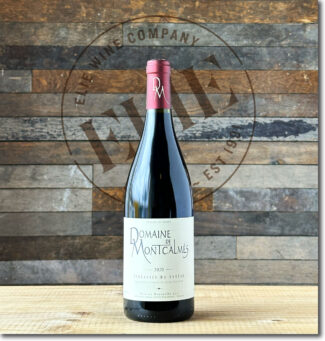 •1• Domaine de Montcalmès, 2020 Terrasses du Larzac ($57) – One Bottle
•1• Domaine de Montcalmès, 2020 Terrasses du Larzac ($57) – One Bottle
60% Syrah, 20% Mourvèdre, 20% Grenache; the grapes were destemmed and crushed and allowed to ferment separately on indigenous yeast during a maceration of 30 days. The varieties underwent regular punching down, following which barrel-aging took place over 24 months; the three varieties were blended two months before bottling.
The wine shows clean blackberry and cassis notes while the palate is silky with spice and fine-grained leather with a touch of licorice on the finish.
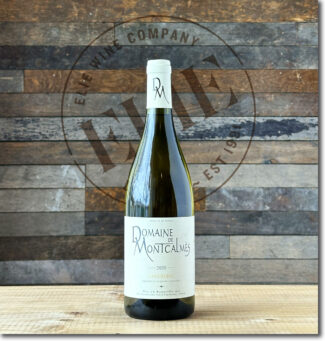 Domaine de Montcalmès, 2020 Languedoc Blanc ($58)
Domaine de Montcalmès, 2020 Languedoc Blanc ($58)
50% Marsanne, 50% Roussanne—the classic Hermitage blend in which the Marsanne provides body and the delicate flavors of peach, pear and spice, while Roussanne brings elegance, aroma, crisp acidity for aging and nut along with mineral notes. The vines, now over twenty years old, are located in Puéchabon on a clay-limestone hillside. After harvesting by hand, the two varietals were pressed and vinified together via direct pressing, and cold settled. Vinification occurred on indigenous yeasts in barrels and demi-muids and the wine was aged in used oak barrels for 24 months. The different barrels were blended 4 to 6 months before bottling.
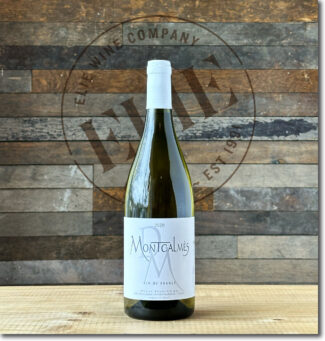 •2• Domaine de Montcalmès, 2020 VdF Languedoc-Terrasses du Larzac Blanc ($47) – One Bottle
•2• Domaine de Montcalmès, 2020 VdF Languedoc-Terrasses du Larzac Blanc ($47) – One Bottle
40% Petit Manseng, 10% Gros Manseng, 10% Petit Courbu, 10% Gros Courbu, 15% Chenin, 15% Chardonnay; a blend so unusual it wears the generic VdF label, but don’t let that fool you; the wine is a gem, showing taut minerality and an herbal edge suggestive of the wild thyme and fennel that grow near the vines. In the mouth, it is reminiscent of honey, almonds, wildflowers and gentle brine.
Vintage 2019
2019 was (as is happening more and more frequently) a season of intense drought, beginning with a cold, dry spring which slowed leaf development in the vines. High summer temperatures arrived quickly and further slowed growth during peaks. Relief came in the weeks before harvest with a mercury drop, especially at night, and a few rain-filled days. Harvest 2019 came later than in 2018 and the wines are more concentrated, with nicely defined tannins behind moderate to low acidity.
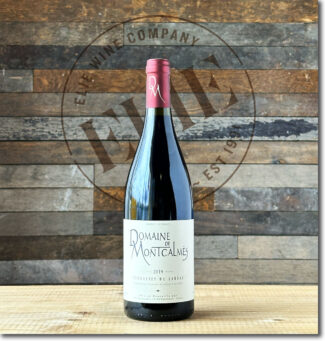 Domaine de Montcalmès, 2019 Terrasses du Larzac ($57)
Domaine de Montcalmès, 2019 Terrasses du Larzac ($57)
60% Syrah, 20% Mourvèdre, 20% Grenache. The two sites that contribute to this are distinct; the first is north-facing and on limestone scree, the source of the Syrah and Grenache, while the second is south-facing and on galet roulés as you might find in Châteauneuf-du-Pape. This warmer site is where he sources the heat-loving Mourvèdre. The wine aged in old casks from Domaine de la Romanée-Conti for two years before release and reamins fresh on the nose with ripe plum and blackberry, bricking out with leather, balsamic, undergrowth, chocolate and dried fruit.
Vintage 2015
A delightful vintage for Languedoc; one that wine writer Jancis Robinson calls ‘une année vinabilis.’ Water tables were replenished over the previous year’s winter, and spring was warm and dry, with no weather issues during flowering. Conditions that favor healthy and clean fruit continued into summer, with no hail or rainstorms of any serious note. Hydric stress was an issue for younger vines with shallower roots, notably some Syrah planted in 2006. The older Grenache and Syrah shrugged it off as deeper roots found water. Harvesting began in early September and finished a week earlier than ever before. Grenache wound up as the star of the year; ripe, healthy and very juicy. The Syrah yielded smaller but very concentrated and fruity berries. The Mourvèdre and Carignan were well-balanced between acid and sugar.
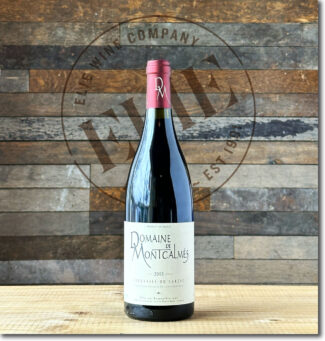 Domaine de Montcalmès, 2015 Terrasses du Larzac ($48)
Domaine de Montcalmès, 2015 Terrasses du Larzac ($48)
60% Syrah, 20% Mourvèdre, 20% Grenache; an enticing nose displaying ripe black cherry, anise and a fleeting whiff of dried strawberry. A Grenache with a delicacy that is reminiscent of Château-Rayas; a nice balance between fruit and the grip of acidity and silken tannins.
Vintage 2014
As folks in Languedoc recall too well, 2014 was the vintage of cataclysmic hailstorms which seriously compromised yields. Spells of unseasonably hot spring weather tested vines while the summer brought sharp variations in temperature, with cool periods followed by periods of extreme heat. Only the most careful and persistent vintners produced notable wines, but the best of these show balance, concentration and complexity at relatively low alcohol levels.
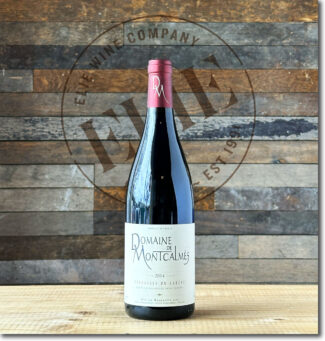 Domaine de Montcalmès, 2014 Terrasses du Larzac ($50)
Domaine de Montcalmès, 2014 Terrasses du Larzac ($50)
60% Syrah, 20% Mourvèdre, 20% Grenache; the nose is full of leathery cherry and perfumed with dried violet while the fruit is settling into garrigue spice with a long and lingering finish washed in velvety tannins.
Vintage 2013
Compared with the rest of France, the Languedoc fared well in 2013, escaping most of the major climatic hazards that beset other regions. Key climatic factors were a wet spring—the wettest in thirty years—but that meant that there was no danger of water stress later in the season. Summer arrived late, leading to a late harvest—sometimes grapes catch up, but this year they did not. Fortunately, September was bright and sunny and the rain that did fall did not harm the grapes. They ripened well, with supple tannins and ample freshness.
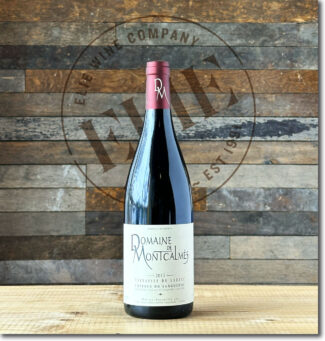 Domaine de Montcalmès, 2013 Terrasses du Larzac ($49)
Domaine de Montcalmès, 2013 Terrasses du Larzac ($49)
60% Syrah, 20% Mourvèdre, 20% Grenache; a typically elegant wine in the process of aging beautifully, showing broad and expansive dried berries and kirsch accented by hints of garrigue and Asian spice. The finish is very long, with ripe, silky, fine-grained tannins.
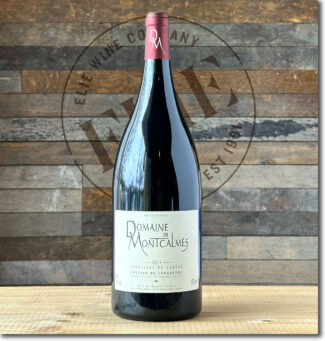 Domaine de Montcalmès, 2013 Terrasses du Larzac ($130) Magnum
Domaine de Montcalmès, 2013 Terrasses du Larzac ($130) Magnum
A large format version of the above.
Vintage 2012
The most challenging vintage Languedoc had seen in 22 years. Yields were low thanks to drought at one stage and mildew at another, and late, uneven ripening resulted in many wines without fully-developed character. It was not a complete disaster, however, and top domains were able to produce a limited amount of excellent wine.
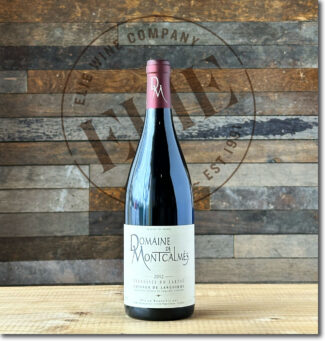 Domaine de Montcalmès, 2012 Terrasses du Larzac ($47)
Domaine de Montcalmès, 2012 Terrasses du Larzac ($47)
60% Syrah, 20% Mourvèdre, 20% Grenache. Polished and splendidly bricked-out, this elegant wine offers dark fruits, bittersweet chocolate and light notes of vanilla behind musk and five-spice powder.
RECENT ARRIVAL
Domaine Saint Sylvestre
Terrasses du Larzac, Languedoc
It’s easy to conclude that Terrasses du Larzac has one of the highest concentrations of ambitious young producers in the south of France. This is partially due to the unique climate conditions but also the vast range of soil types confined to a relatively small area. Throughout the communes that host Larzac’s vineyards, you’ll encounter schist, sand, horizontal layers of red ruffe, clay/limestone and galets roulés in the course of a few miles.
“Among the more interesting of these types is the ruffe,” says Vincent Guizard of Domaine Saint-Sylvestre, referring to the fine-grained, brilliant-red sandstone soil. “It’s rarely found outside Languedoc. It is extremely iron-rich soil that is a beautiful brick color and produces intense, fruity and full-bodied Syrah, Grenache, Carignan, Mourvèdre and Cinsault.”
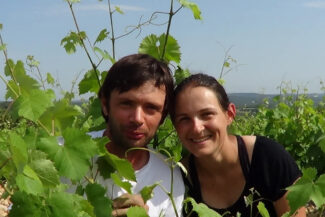
Vincent and Sophie Guizard, Domaine Saint Sylvestre
Guizard knows his terroir as well as his wife Sophie knows the wine business; together, they created Domaine Saint-Sylvestre in 2010 with 17 acres he owned as part of Domaine de Montcalmès, the winery he worked alongside his cousin, Frédéric Pourtalié. Domaine Saint-Sylvestre released its first vintage release in 2011.
Vincent and Sophie employ a sustainable approach to viticulture, a method known as ‘lutte raisonnée’ (the reasoned struggle) and use no synthetic fertilizers or herbicides in the vineyards.
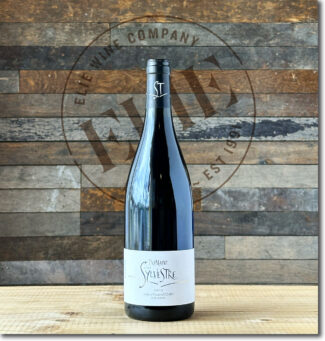 •3• Domaine Saint Sylvestre, 2015 Terrasses du Larzac ($39) – One Bottle
•3• Domaine Saint Sylvestre, 2015 Terrasses du Larzac ($39) – One Bottle
70% Syrah, 20% Grenache, 10% Mourvèdre. A beautifully-aged Larzac blend showing dried cranberry, sweet leather, crushed stone, garrigue and woodsmoke. Total production, 1375 cases.
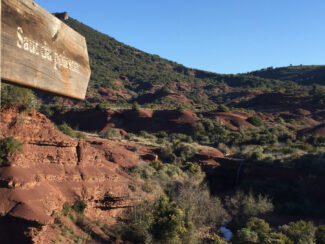
Rich-iron red Ruffe soil
Le Clos du Serres
Terrasses du Larzac, Languedoc
Says Beatrice Fillon, “We chose this new occupation to rebuild their lives, to abandon a lifestyle where speed was of the essence and which seemed to us to be more and more unreal.”
She is referring to the decision she made with her husband Sébastien to purchase the 40-acre domain Clos du Serres. It was a life-changing move for the couple. Born in St Etienne, Sébastien grew up in a rural, agricultural environment and was familiar with working the land, but it was Beatrice, who hails from Montpellier, who chose the area: “We wanted to move south to the only region where there is still land to clear.”
Sébastien adds, “We were won over by the quality of life, surrounded by wild, unspoilt nature, set among olive groves, vines and the wild garrigue, close to some great natural sites—Lake Salagou, Saint-Guilhem-le-Désert, the Hérault gorges—but not far from Montpellier or the sea at the foot of the Larzac plateau.”
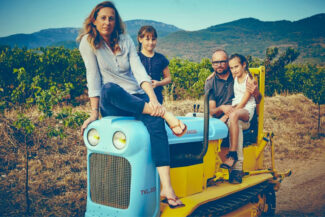
The Fillons, Le Clos du Serres
The domain is organically certified and the Fillon’s philosophy is built around the idea that a wine’s quality has its roots in the vine, but terroir gives nothing without being worked. To this effect, each of their parcels are cultivated with individual attention: “In winter, we leave the grass between the rows of vines to avoid erosion during the heavy autumn rain and enhance the soil’s life,” says Sébastien. “We start ploughing with the first warm days getting rid of the grass naturally thus ensuring it doesn’t challenge the vine’s access to water. During the winter we treat with organic material; grape-based compost and manure from animals bred on the Larzac plateau.”
Work in the cellar is equally meticulous, according to Fillon: “We use ‘tronconique’ (conical) concrete vats and other small ones made of glass fiber with floating ‘hats.’ Thanks to the shape of the concrete vats, the ‘marc’ hat sinks into the juices, resulting in soft and natural extraction, so that fermentation based on the grapes’ natural yeast is very steady. The glass fiber vats mean we can work with very small volumes, maximizing our ability to vinify parcel by parcel. Proof is that our winery boasts 17 vats for 15 land parcels.”
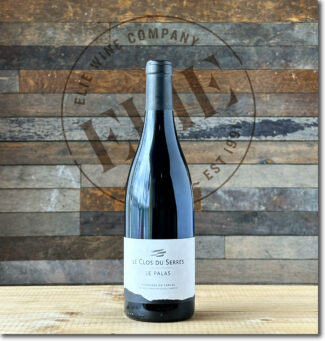 •4• Le Clos du Serres ‘Le Palas’, 2018 Terrasses du Larzac ($33) – One Bottle
•4• Le Clos du Serres ‘Le Palas’, 2018 Terrasses du Larzac ($33) – One Bottle
From a west-facing lieu-dit adjacent to the village of Saint-Jean de la Blaquière, this organically-certified blend of 38% Syrah, 32% Carignan, 30% Grenache is aged in concrete and shows blackberry and plum preserves with citrus notes accompanying licorice, black pepper and graphite. Total production, 250 cases.
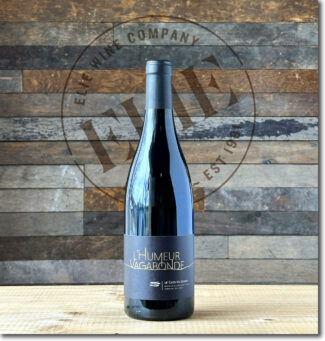 •5• Le Clos du Serres ‘L’Humeur Vagabonde’, 2019 Terrasses du Larzac ($39) – One Bottle
•5• Le Clos du Serres ‘L’Humeur Vagabonde’, 2019 Terrasses du Larzac ($39) – One Bottle
70% Grenache, 15% Cinsault, 15% Carignan; this tiny production wine (whose name loosely translates to ‘The Wandering Mood’), shows ripe blackberry, cherry and blackcurrant behind hits of coffee and chocolate with an impressive spice finish touched with clove and violet. 125 cases produced.
- - -
Posted on 2024.02.17 in France
Featured Wines
- Notebook: A’Boudt Town
- Saturday Sips Wines
- Saturday Sips Review Club
- The Champagne Society
- Wine-Aid Packages
Wine Regions
Grape Varieties
Albarino, Albarín Blanco, Albarín Tinto, Albillo, Aleatico, Aligote, Arbanne, Aubun, Barbarossa, barbera, Biancu Gentile, bourboulenc, Cabernet Franc, Caino, Caladoc, Calvi, Carcajolu-Neru, Carignan, Chablis, Chardonnay, Chasselas, Cinsault, Clairette, Corvina, Counoise, Dolcetto, Erbamat, Ferrol, Frappato, Friulano, Fromenteau, Gamay, Garnacha, Garnacha Tintorera, Gewurztraminer, Graciano, Grenache, Grenache Blanc, Groppello, Juan Garcia, Lambrusco, Loureira, Macabeo, Macabou, Malbec, Malvasia, Malvasia Nera, Marcelan, Marsanne, Marselan, Marzemino, Mondeuse, Montanaccia, Montònega, Morescola, Morescono, Moscatell, Muscat, Natural, Niellucciu, Parellada, Patrimonio, Pedro Ximénez, Petit Meslier, Petit Verdot, Pineau d'Aunis, Pinot Blanc, Pinot Gris, Pinot Meunier, Pinot Noir, Pouilly Fuisse, Pouilly Loche, Poulsard, Prieto Picudo, Riesling, Rondinella, Rose, Rousanne, Roussanne, Sagrantino, Sauvignon Blanc, Savignin, Sciacarellu, Semillon, Souson, Sparkling, Sumoll, Sylvaner, Syrah, Tannat, Tempranillo, Trebbiano, Trebbiano Valtenesi, Treixadura, Trousseau, Ugni Blanc, vaccarèse, Verdicchio, Vermentino, Xarel-loWines & Events by Date
- July 2024
- June 2024
- May 2024
- April 2024
- March 2024
- February 2024
- January 2024
- December 2023
- November 2023
- October 2023
- September 2023
- August 2023
- July 2023
- June 2023
- May 2023
- April 2023
- March 2023
- February 2023
- January 2023
- December 2022
- November 2022
- October 2022
- September 2022
- August 2022
- July 2022
- June 2022
- May 2022
- April 2022
- March 2022
- February 2022
- January 2022
- December 2021
- November 2021
- October 2021
- September 2021
- August 2021
- July 2021
- June 2021
- May 2021
- April 2021
- March 2021
- February 2021
- January 2021
- December 2020
- November 2020
- October 2020
- September 2020
- August 2020
- July 2020
- June 2020
- May 2020
- April 2020
- March 2020
- February 2020
- January 2020
- December 2019
- November 2019
- October 2019
- September 2019
- August 2019
- July 2019
- June 2019
- May 2019
- April 2019
- March 2019
- February 2019
- January 2019
- December 2018
- November 2018
- October 2018
- September 2018
- August 2018
- July 2018
- June 2018
- May 2018
- April 2018
- March 2018
- February 2018
- January 2018
- December 2017
- November 2017
- October 2017
- September 2017
- August 2017
- July 2017
- June 2017
- May 2017
- April 2017
- March 2017
- February 2017
- January 2017
- December 2016
- November 2016
- October 2016
- September 2016
- August 2016
- July 2016
- June 2016
- May 2016
- April 2016
- March 2016
- February 2016
- January 2016
- December 2015
- November 2015
- October 2015
- September 2015
- August 2015
- July 2015
- June 2015
- May 2015
- April 2015
- March 2015
- February 2015
- January 2015
- December 2014
- November 2014
- October 2014
- September 2014
- August 2014
- July 2014
- June 2014
- April 2014
- March 2014
- February 2014
- January 2014
- December 2013
- November 2013
- October 2013
- September 2013
- August 2013
- July 2013
- June 2013
- May 2013
- April 2013
- March 2013
- February 2013
- January 2013
- December 2012
- November 2012
- October 2012
Search



